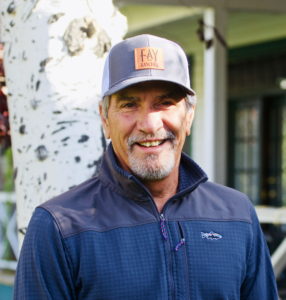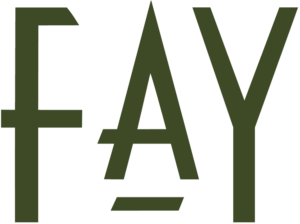Hunting Big Game For Landowners
By Jim Vidamour ALC, Principal Broker, Licensed in CO, NM
Are you thinking about buying your dream hunting property in the Rocky Mountains but are confused by the different landowner hunting regulations in each state? If so, I hope this state-by-state overview of Landowner big game hunting opportunities and programs will help you.
There are various rules for residents, non-residents, previous residents, state native-born, and of course, Landowners. Some states make no distinction between resident and non-resident landowners, where others might. If you want in-depth information, each state in the Rocky Mountain West has a website and printed hunting manual explaining the plethora of rules, regulations, schedules, fees, and game management units.
Colorado
How you get a license: There are many Over-the-Counter Game Management Units for elk in Colorado. A hunter may buy a license/tag over the counter for second and third rifle seasons and, in most cases, archery season. A public draw is held in April for first and fourth rifle seasons, any non- OTC units, non-OTC licenses, and Mule Deer statewide.)
Landowner Preference Program
Landowners who own a minimum of 160 contiguous acres, zoned agricultural use, and have proven seasonal habitation by the targeted species may be eligible for the Landowner Preference Program. Essentially this is a draw separate from the public draw. Applications for the draw are given to the landowner based on the acreage of the property owned. For instance, a property of 160 acres to 639 acres is eligible for one application to the LPP draw and a property of 3,040 acres to 3,639 acres is eligible for five applications to the LPP draw. Vouchers are given to the landowner for successful draws, and he may transfer them to his hunters, but they cannot be sold. Landowners must apply for this program before the December 1 deadline. There is no distinction made between resident and non-resident landowners other than non-residents pay non-resident license fees. A landowner in the LPP may also apply in the public draw but is still restricted to the individual limit on the number of tags per species.
New Mexico
How you get a license: For the general public, Mule deer, pronghorn, and bear licenses can be generally purchased over the counter. Elk are draw only in NM, and it is essential to know in which Management Zone your ranch is located.
Landowner & the E-Plus Program
The state is now divided into three elk management zones; primary, secondary, and special. The rules will differ for landowners depending upon which management zone their ranch is located.
The Primary Management Zone is the area within the state where elk management is focused, and licenses are limited in number. The Special Management Zone is the area within the state where private land elk authorizations are issued to private landowners by the department on a ranch by ranch basis. The Secondary Management Zone is the area within the state where no specific elk management goals are set, and licenses are available to private landowners in unlimited number.
The state distributes private land elk authorizations to eligible landowners in the Primary and Special Management Zones through the EPLUS program. These authorizations can be bartered, sold, or traded to hunters. Authorization is then used by a hunter to buy a private land elk license.
Montana
How to get a License: Residents may purchase elk, deer, black bear, and mountain lion licenses over the counter. Residents also can apply for lottery drawings for antelope, moose, sheep, and mountain goat. Non-residents may only purchase antlerless elk, antlerless deer, and black bear over the counter in specific hunting districts. Non-residents may enter a lottery draw, with a mid-March deadline for all other license types available to Montana Residents.
Landowner Preference:
Residency and non-residency are still a consideration if you are a landowner, and a non-resident must still enter the draw. Landowner preference in the draw is applied only to the first-choice hunting district. Partnerships may delegate landowner preference to a member of the immediate family, a partner, or an employee. A corporation may delegate landowner preference to one shareholder. A resident landowner may Sponsor a non-resident to hunt on his land.
To claim landowner preference for a deer or antelope permit, a landowner must own at least 160 acres of contiguous land that is primarily for agricultural purposes within the applied for hunting district. Fifteen percent of each hunting district quota for deer A and antelope licenses and for deer permits is set aside for landowners in that hunting district.
For a landowner preference elk permit, the landowner must own or be contracting to purchase at least 640 acres of contiguous land used by elk and verified by FWP, within the applied for hunting district. Fifteen percent of each hunting district quota for elk licenses and permits is set aside for landowners in that hunting district.
Wyoming
How to get a License: There are both over-the-counter and draw licenses available in Wyoming based on multiple factors. Residents only are allowed to purchase over-the-counter licenses. A non-resident must enter a draw to have a chance at an elk, deer, antelope, or moose license.
Landowner Licenses
A Landowner must own at least 160 contiguous acres in a “draw area” to apply for a tag. The land must meet a 2,000 day/year use threshold providing food, water, and habitat for the desired species. This can be 10 animals for two hundred days, or even 400 animals for 5 days. If there are over-the-counter tags available for the selected species, then there are no landowner tags. A landowner is limited to two tags per species regardless of acreage. A finite number of landowner tags are available in each area. If applications exceed availability in an area, a competitive draw is done.
Idaho
How to get a license: Idaho has both Controlled Hunts (draw) and General Hunts (over-the-counter) for residents and non-residents.
Landowner Appreciation Program:
For the early August draw, a property must be at least 640 acres of land in one controlled hunt area. Landowners with between 320 and 639 acres of land in one controlled hunt area are eligible to apply for leftover LAP tags available beginning in mid-August. Only property used by, and provides significant habitat values for deer, elk, pronghorn, or black bear qualifies for the Landowner Appreciation Program. Landowners may receive a tag only for species that use the property. Only one LAP tag per species may be issued for eligible property consisting of between 320 and 4,999 acres. One additional tag may be issued to a landowner or designated agent for eligible property of 5,000 acres or more.
Oregon
How to get a License: There are both Controlled (draw) and General (O-T-C) hunts in Oregon. Most of the elk hunts are controlled.
Landowner Preference Program
LOP tags are available to landowners, family members, and others designated by the landowner based on the acreage owned. Recipients of LOP tags may only hunt the property for which they are registered. There are even some tags available for properties of 40 contiguous acres. Certain LOP tags may be transferred to non-family members. There is no distinction between resident and non-resident other than different fees.
This article is no substitute for deeply investigating the state regulations where you intend to purchase your hunting ranch. Each state has many nuances, including types of licenses, special circumstances for various species, different seasons, fee structures, residency requirements, method of taking, to name some. Some of these regulations may be black and white, while others are affected by other conditions. It can be safely said that the Game and Fish Departments in each of the states recognize, in varying degrees and with different programs, the contribution of private lands to the health of all animal species. I wish you safe and successful hunts on your new hunting ranch!

Discover the Charm and Opportunities of North Dakota
Are you considering a move but unsure where to settle? North Dakota, often overlooked by travelers and potential residents alike, offers a wealth of opportunities and a lifestyle to suit a variety of preferences. Whether you’re drawn to outdoor adventures, a slower pace of life, or expanding career opportunities, this charming state has something to […]

Easement Dispute – Ask an Agent
Dear Land Expert, I am preparing to list my Western ranch soon; however, my neighbor is currently contesting an easement that crosses a corner of their property, an access route I’ve used consistently and that has been essential for reaching certain parts of my land. While I’ve always understood this to be a valid easement, […]




